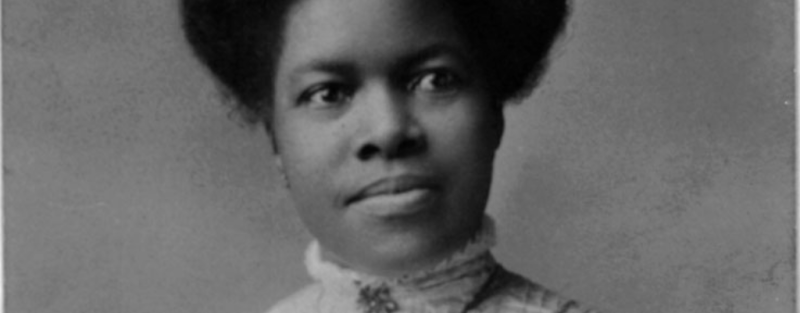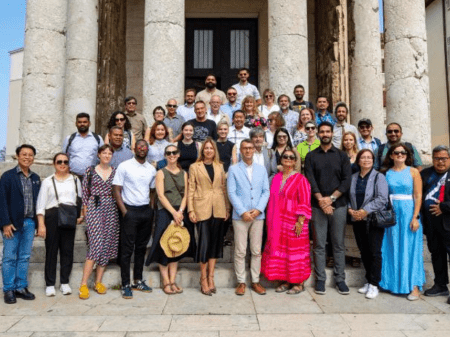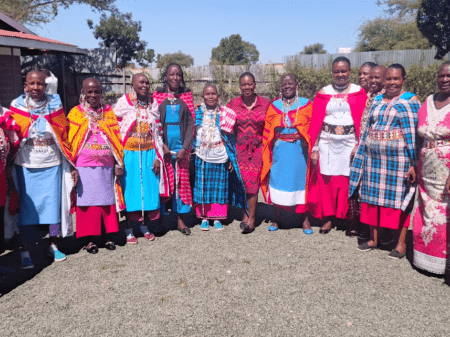
Cooperation has proved to be a powerful tool for social justice - and in particular for communities subjected to racial discrimination. During this year's Black History Month, we acknowledge how people working together in the face of racism have long used cooperative action to improve each others’ lives in tangible ways.
The food co-ops of the Neighboring Food Co-op Association (NFCA) in the USA are working together to manifest the shared vision of a thriving regional economy, rooted in a healthy, just and sustainable food system, and a vibrant community of cooperative enterprise. Central to this work is addressing systemic racism and classism in all of their many forms.
“To live out and fulfil the values and principles of our cooperative movement, we need to centre social, racial, and economic justice in our co-ops,” it says.
Another cooperative doing just this is the Federation of Southern Cooperatives, which represents Black farmers, landowners and co-ops in the southern USA. It was founded 57 years ago by 22 cooperatives, at the intersection of the Civil Rights Movement and the Black Cooperative Development Movement. Today, it provides co-op development, land retention and advocacy services, as well as mediation and disaster relief.
The struggles faced by black cooperators are well documented in Dr Jessica Gordon-Nembhard’s Collective Courage: A History of African American Cooperative Economic Thought and Practice, which explores the tradition of black cooperative economic development in the context of the long struggle for civil rights.
She believes the co-op model can be a powerful tool to empower subaltern groups struggling with economic inequality and discrimination. Her research looked at why black communities have set up cooperatives across the country.
“At the beginning, the co-ops were a response to marginality and crisis,” she told Co-op News. “Often it was because they weren’t provided with the kind of burial they wanted for their families, or they couldn’t get access to quality food, healthcare or banking. So they created their own businesses.
“That connection between surviving oppression and marginality through cooperative economics was very powerful. And then people went even further and started saying: ‘If we can use this to help us just survive, imagine if we used this strategy even more, how much we could prosper from it’?”
One of those inducted into last year’s Cooperative Hall of Fame was Nannie Burroughs (1879-1961), co-founder of Cooperative Industries of Washington, who was nominated by Dr Gordon Nembhard and Margaret Lund.
Burroughs believed that cooperatives offered Black communities a viable alternative to the hardships of the Great Depression. She was a great American intellectual orator, educator and activist who worked with or inspired Adam Clayton Powell Jr, Ella Joe Baker, Martin Luther King Jr, Ralph Abernathy and Thurgood Marshall. She co-founded the women's convention of the National Baptist Convention to amplify women's voices and role in the church, and opened the National Training School for Women and Girls in 1909, the first vocational school for black girls in the United States,
“A major school and a national religious organisation were not enough for MS Burroughs,” said Dr Gordon Nembhard in Burrough’s nomination video. “She founded and used the cooperative business model to reach her ultimate aim of economic empowerment for black women. It was through cooperative ownership that a woman could gain skills in order to earn a good income in a safe environment with workplace democracy and self-determination.”
She founded the first of a set of cooperatives in July 1934 with Sadie Morse Bethe to create jobs for black women as well as the unemployed, unskilled and disabled. She started with cooperative production, sewing, canning, broom making, barrel chairs and handicrafts and within six months of its founding, the Northeast Self Help Cooperative was the largest sewing factory in DC, with 50 members. Within two years, it had grown to 400 members.
Renamed Cooperative Industries of Washington DC, the cooperative became “what may have been the first multi-stakeholder cooperative in the USA, combining the worker co-ops with the co-op farm and the consumer grocery co-op,” said Dr Gordon Nembhard.
“Burroughs saw herself as a movement builder."




